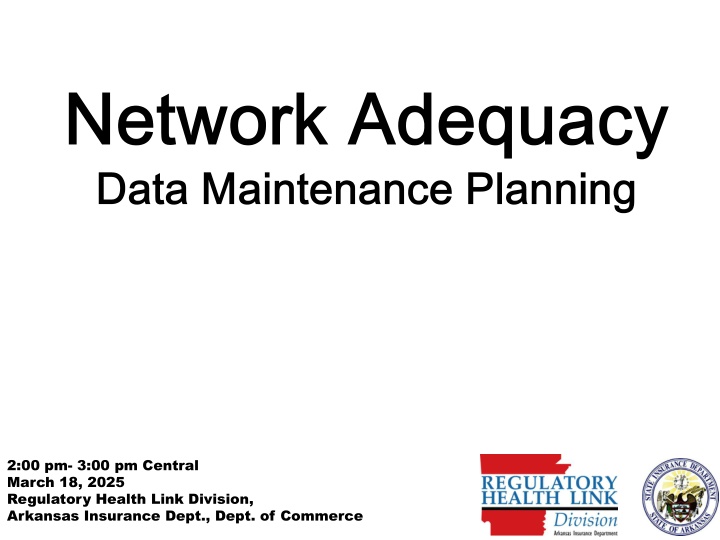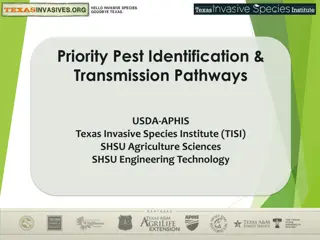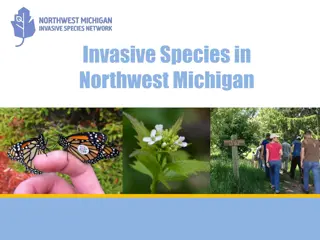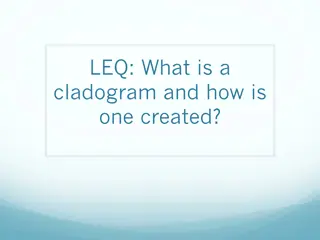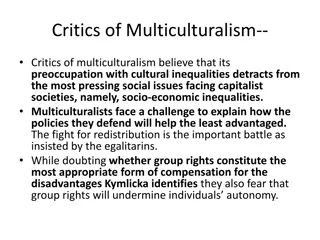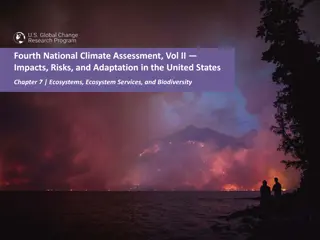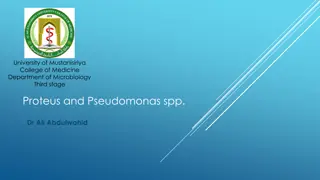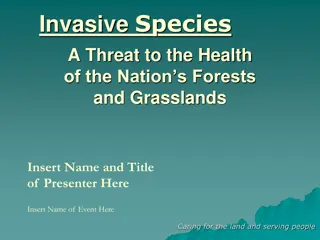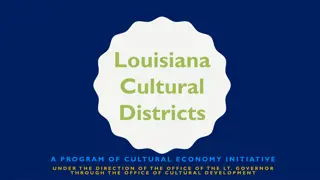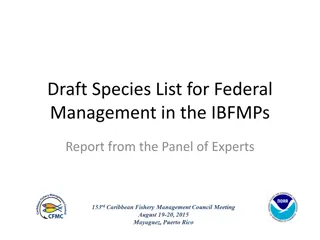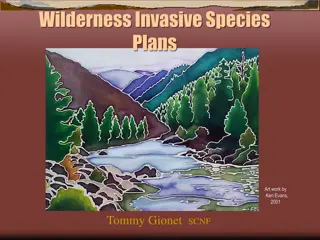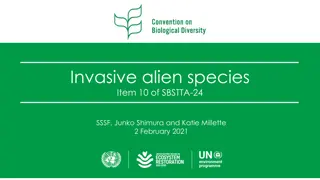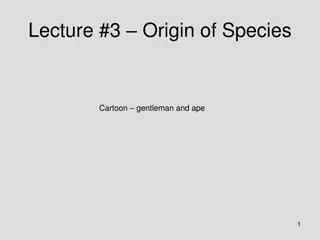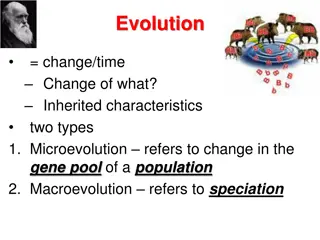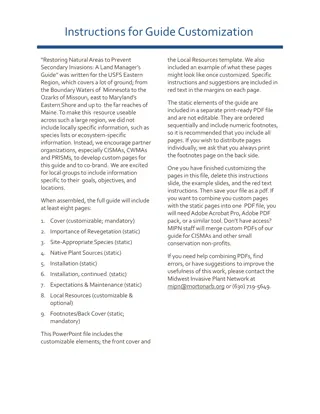Evolution of Human Species and Cultural Development
The evolution of human beings, emphasizing biological processes, morphological changes, and ancestral primates. Delve into the misconceptions about race concepts and the classification methods. Discover the unique characteristics of human organisms and their cultural advancements driven by intellect and creativity."
Download Presentation

Please find below an Image/Link to download the presentation.
The content on the website is provided AS IS for your information and personal use only. It may not be sold, licensed, or shared on other websites without obtaining consent from the author.If you encounter any issues during the download, it is possible that the publisher has removed the file from their server.
You are allowed to download the files provided on this website for personal or commercial use, subject to the condition that they are used lawfully. All files are the property of their respective owners.
The content on the website is provided AS IS for your information and personal use only. It may not be sold, licensed, or shared on other websites without obtaining consent from the author.
E N D
Presentation Transcript
2:00 pm- 3:00 pm Central March 18, 2025 Regulatory Health Link Division, Arkansas Insurance Dept., Dept. of Commerce 1
Agenda 1) Introductions 2) Rule 106 change: When? 3) PTNP final list. a. The one version of truth for provider classifications not the NA template b. Problems to mull over for action in the next round (June-July?) i. High volume of PCP-Specialty combinations for the same provider ii. Acute care Hospitals in Arkansas 4) Changes in data preparation by Issuers a. Specialty Access Template no longer used b. Justification Template redone 5) Processes after data submission a. The multiple rounds including outlier location review b. Tentative timelines for the multiple rounds 6) Review new customized justification form 7) Outlier location review a. What we have so far in this POC 2
Guiding Principles 1. Align with available Federal/National standards or efforts if feasible. 2. Build collaboratively across organizations, disciplines. 3. Perfection should not be the enemy of the good. 4. Build incrementally - Over years and scope. 5. Apply Pareto s 80-20 principle for every phase. 6. Seek lessons learned from others and within. 3
Agenda 1) Introductions 2) Rule 106 change: When? 3) PTNP final list. a. The one version of truth for provider classifications not the NA template b. Problems to mull over for action in the next round (June-July?) i. High volume of PCP-Specialty combinations for the same provider ii. Acute care Hospitals in Arkansas 4) Changes in data preparation by Issuers a. Specialty Access Template no longer used b. Justification Template redone 5) Processes after data submission a. The multiple rounds including outlier location review b. Tentative timelines for the multiple rounds 6) Review new customized justification form 7) Outlier location review a. What we have so far in this POC 4
Rule 106 Change We delayed modifying Rule 106 because of lack of clarity of what is or is not feasible there was more than CCIIO Standards involved. Change draft tentatively planned for July-end (by AID) makes it feasible to get Rule 106 readied for PY2027. 5
Agenda 1) Introductions 2) Rule 106 change: When? 3) PTNP final list. a. The one version of truth for provider classifications not the NA template b. Problems to mull over for action in the next round (June-July?) i. High volume of PCP-Specialty combinations for the same provider ii. Acute care Hospitals in Arkansas 4) Changes in data preparation by Issuers a. Specialty Access Template no longer used b. Justification Template redone 5) Review new customized justification form 6) Processes after data submission a. The multiple rounds including outlier location review b. Tentative timelines for the multiple rounds 7) Outlier location review a. What we have so far in this POC 6
High volume of PCP-Specialty combinations Unusual and recent PTNP change observed by Arkansas DHS. 131 NPIs before switching to CCIIO Provider-Types. It currently stands at 1814 NPIs more than a 10-fold increase. 7
High volume of PCP-Specialty combinations Unlikely to have impact on Network Adequacy reviews, because Mostly inaccurate classifications as PCPs Historically every issuer has been adequate w.r.t. PCPs Despite low impact - inaccuracies need to be corrected in the next round of PTNP 8
Acute Care Hospitals Per CCIIO, AR has 59 Acute Care Hospitals (as of PY2025) Current PTNP shows 142 NPI classifications. Alarmingly high but The high number includes out-of-state providers Multiple NPIs per hospital Actual count is nearer to 79 hospitals inside Arkansas Needs attention. 9
Agenda 1) Introductions 2) Rule 106 change: When? 3) PTNP final list. a. The one version of truth for provider classifications not the NA template b. Problems to mull over for action in the next round (June-July?) i. High volume of PCP-Specialty combinations for the same provider ii. Acute care Hospitals in Arkansas 4) Changes in data preparation by Issuers a. Specialty Access Template no longer used b. Justification Template redone 5) Processes after data submission a. The multiple rounds including outlier location review b. Tentative timelines for the multiple rounds 6) Review new customized justification form 7) Outlier location review a. What we have so far in this POC 10
Before PY2026 AR Specialty Access Template (County Level-Provider Type Statistics Reported by Issuer) NA Template (Detailed Data. NPI & Practicing locations) AR Supplemental NA Template (Template to hold provider data for provider types CCIIO would disallow but needed by Arkansas) Network ID Template (Identifies unique networks used by issuer.) AR Provider-Enrollee Ratio Template (State Level Provider-Enrollee ratios for various provider types) AR Justification Template (Justifications for shortcomings on county level statistics for different provider types) Service Area Template (Describes service area(s) covered by plans) Seven data templates were needed for Network Adequacy Regulation 11
from PY2026 AR Specialty Access Template (County Level-Provider Type Statistics Reported by Issuer) NA Template (Detailed Data. NPI & Practicing locations) AR Supplemental NA Template (Template to hold provider data for provider types CCIIO would disallow but needed by Arkansas) Network ID Template (Identifies unique networks used by issuer.) AR Provider-Enrollee Ratio Template (State Level Provider-Enrollee ratios for various provider types) AR Justification Template (Justifications for shortcomings on county level statistics for different provider types) Service Area Template (Describes service area(s) covered by plans) Five templates, not seven, required during data submission time from PY2026. 12
In summary, for data submissions 5 templates, not 7 needed. Issuers are not required to compute Network Adequacy. No up-front justifications to deal with. 13
Agenda 1) Introductions 2) Rule 106 change: When? 3) PTNP final list. a. The one version of truth for provider classifications not the NA template b. Problems to mull over for action in the next round (June-July?) i. High volume of PCP-Specialty combinations for the same provider ii. Acute care Hospitals in Arkansas 4) Changes in data preparation by Issuers a. Specialty Access Template no longer used b. Justification Template redone 5) Processes after data submission a. The multiple rounds including outlier location review b. Tentative timelines for the multiple rounds 6) Review new customized justification form 7) Outlier location review a. What we have so far in this POC 14
Processes after data submissions Round 0: AID identifies outlier addresses and shares with issuers. Issuers responds with revised NA templates if required. Round 1: AID computes ideal network combining all networks. This is necessary for generating objections where improvement is possible. This also means No providers available is not a valid answer. AID computes individual networks and compares to ideal network to generate customized Justification Templates. Issuers responds with revised NA templates if required. Round 2: For final dispositions, AID re-computes individual networks for for issuers who resubmitted NA templates at the end of Round 1 15
Round 0: Outlier Address Reporting NA Template (Detailed Data. NPI & Practicing locations) Current Finalized Provider Type NPI Pool (PTNP) (Provider classifications vetted by the industry) Provider locations Provider classifications Outlier/isolated provider location detection Outlier Addresses Outlier Address Reports For Issuer Review 16
Round 0 17
After data submissions Round 0: AID identifies outlier addresses and shares with issuers. Issuers responds with revised NA templates if required. Round 1: AID computes ideal network combining all networks. This is necessary for generating objections where improvement is possible. This also means No providers available is not a valid answer. AID computes individual networks and compares to ideal network to generate customized Justification Templates. Issuers responds with revised NA templates if required. Round 2: For final dispositions, AID re-computes individual networks for for issuers who resubmitted NA templates at the end of Round 1 18
round 1: AIds na Computation NA Template (Detailed Data. NPI & Practicing locations) Current Finalized Provider Type NPI Pool (PTNP) (Provider classifications vetted by the industry) Provider locations Provider classifications Consumer locations QHP Sample Population file (Provided by CCIIO.) CCIIO requirements CCIIO NA Drive Distance for each Provider Type & Medicare County type AID s Computation of coverage % Network Shortcomings AR Justification Template (Justifications for shortcomings on county level statistics for different provider types) 19
Round 1 20
After data submissions Round 0: AID identifies outlier addresses and shares with issuers. Issuers responds with revised NA templates if required. Round 1: AID computes ideal network combining all networks. This is necessary for generating objections where improvement is possible. This also means No providers available is not a valid answer. AID computes individual networks and compares to ideal network to generate customized Justification Templates. Issuers responds with revised NA templates if required. Round 2: For final dispositions, AID re-computes individual networks for for issuers who resubmitted NA templates at the end of Round 1 21
round 2: AIds na Computation NA Template (Detailed Data. NPI & Practicing locations) Current Finalized Provider Type NPI Pool (PTNP) (Provider classifications vetted by the industry) Provider locations Provider classifications Consumer locations QHP Sample Population file (Provided by CCIIO.) CCIIO requirements CCIIO NA Drive Distance for each Provider Type & Medicare County type AID s Computation of coverage % Network Shortcomings AID internal report for final disposition 22
Round 0 Round 1 Round 2 Tentative Review Timelines 24
Agenda 1) Introductions 2) Rule 106 change: When? 3) PTNP final list. a. The one version of truth for provider classifications not the NA template b. Problems to mull over for action in the next round (June-July?) i. High volume of PCP-Specialty combinations for the same provider ii. Acute care Hospitals in Arkansas 4) Changes in data preparation by Issuers a. Specialty Access Template no longer used b. Justification Template redone 5) Processes after data submission a. The multiple rounds including outlier location review b. Tentative timelines for the multiple rounds 6) Review new customized justification form 7) Outlier location review a. What we have so far in this POC 25
Customized Justification Form Objectives: Present all network concerns in one document Consolidate communication; eliminate back-and-forth Ensure effective responses with validation Action: Single Excel document presenting both objections and network development efforts In-document validation to pre-check responses Web-based upload on rhld.insurance.arkansas.gov Demonstration 26
Agenda 1) Introductions 2) Rule 106 change: When? 3) PTNP final list. a. The one version of truth for provider classifications not the NA template b. Problems to mull over for action in the next round (June-July?) i. High volume of PCP-Specialty combinations for the same provider ii. Acute care Hospitals in Arkansas 4) Changes in data preparation by Issuers a. Specialty Access Template no longer used b. Justification Template redone 5) Processes after data submission a. The multiple rounds including outlier location review b. Tentative timelines for the multiple rounds 6) Review new customized justification form 7) Outlier location review a. What we have so far in this POC 27
Outlier Locations Processing Objectives: Improve quality and consistency of provider locations across networks Perform clean-up where possible before distance requirement analysis Action: Identify singular provider locations isolated from others Present findings as economically as possible Provide opportunity for correction in Round 0 Demonstration 28
Discussions & Questions Discussions & Questions Email RHLD.DataOversight@arkansas.gov 29
